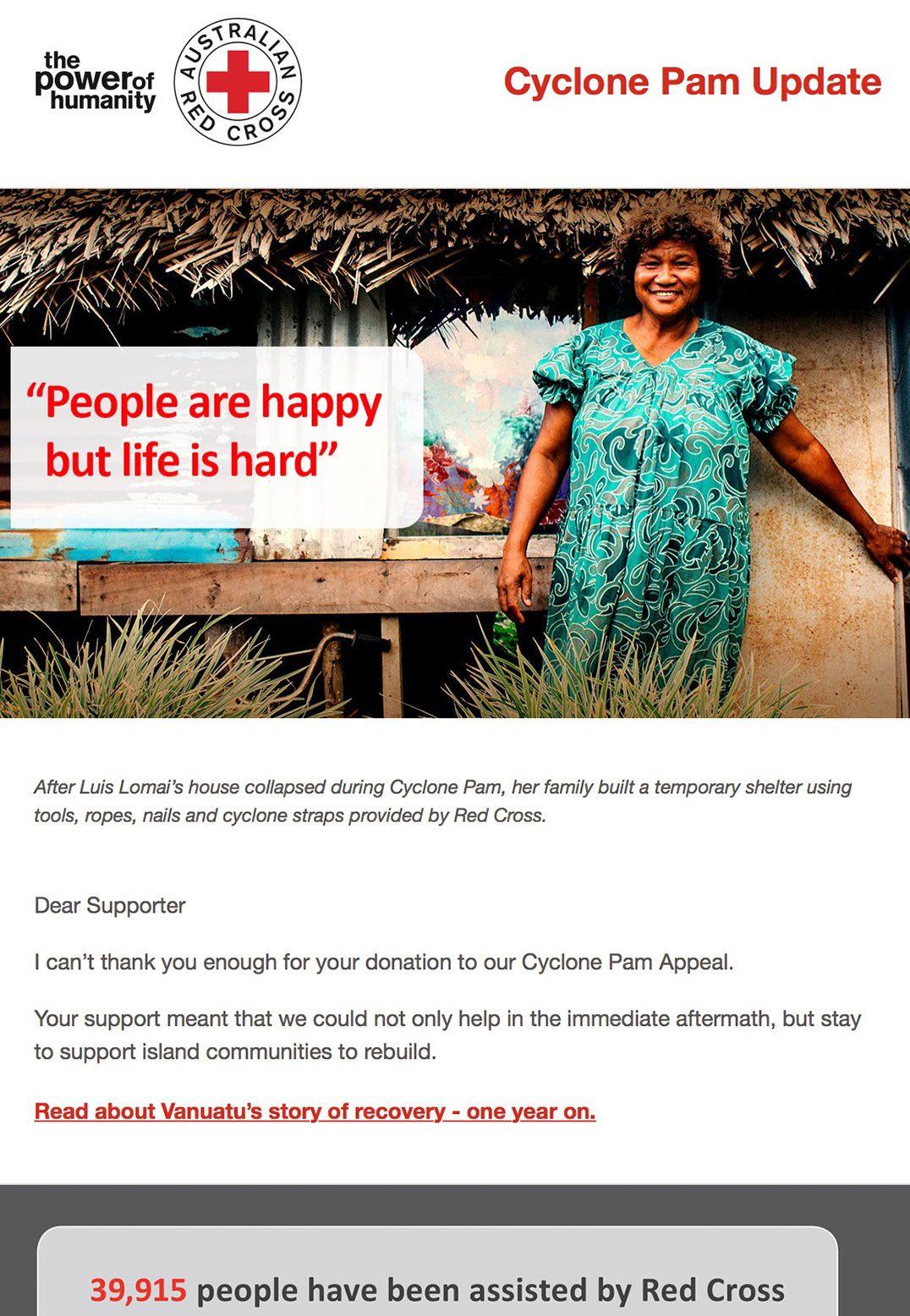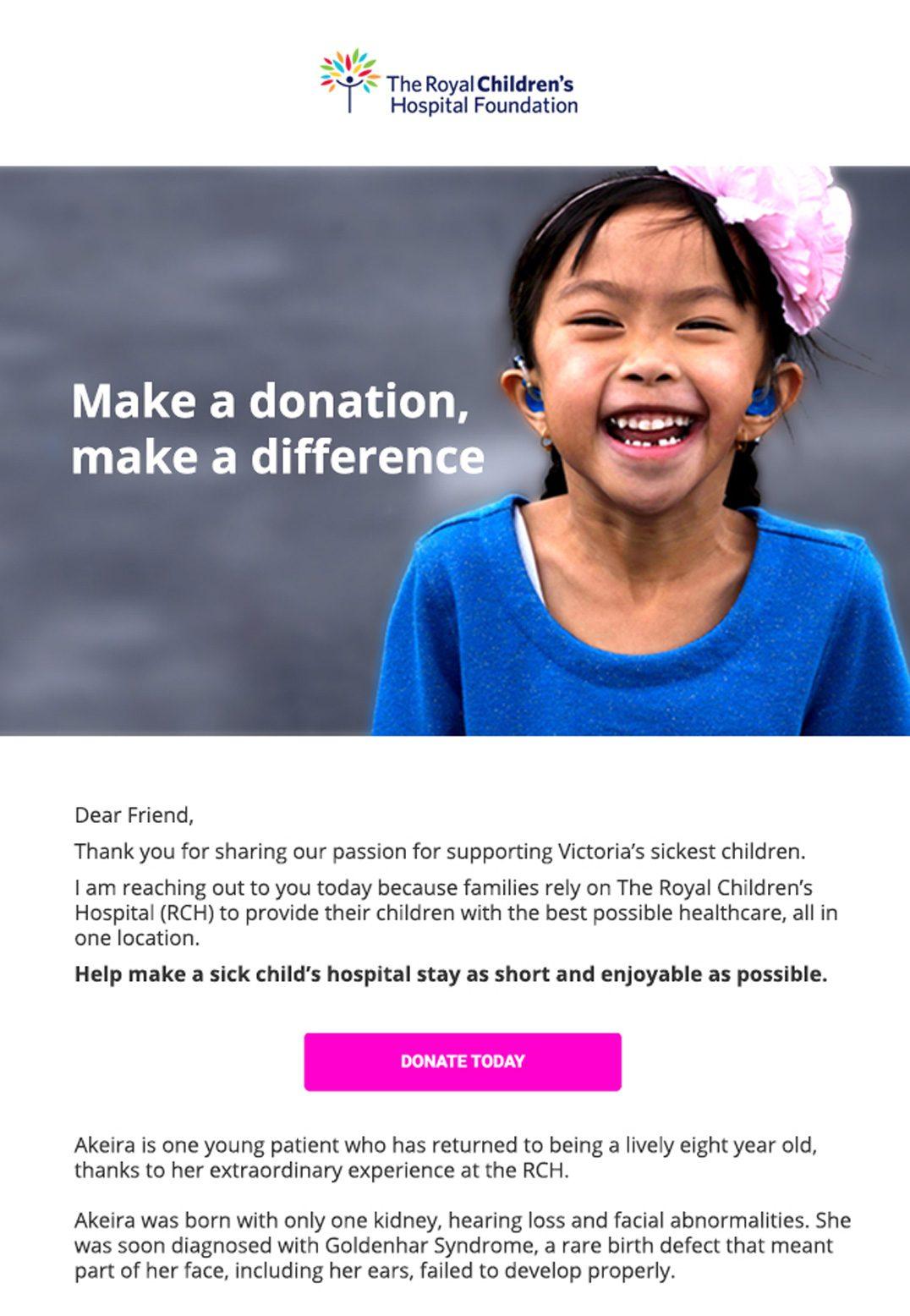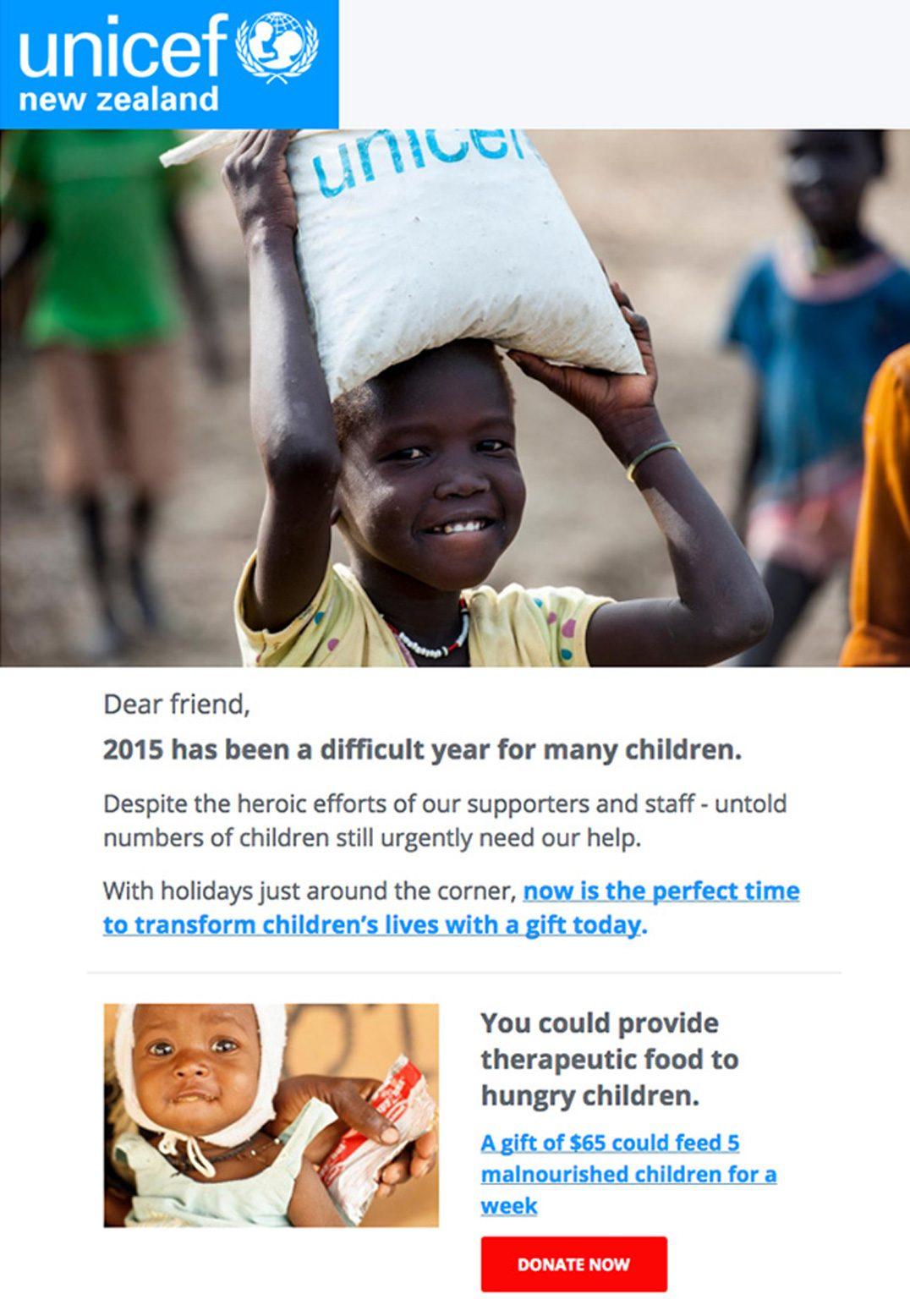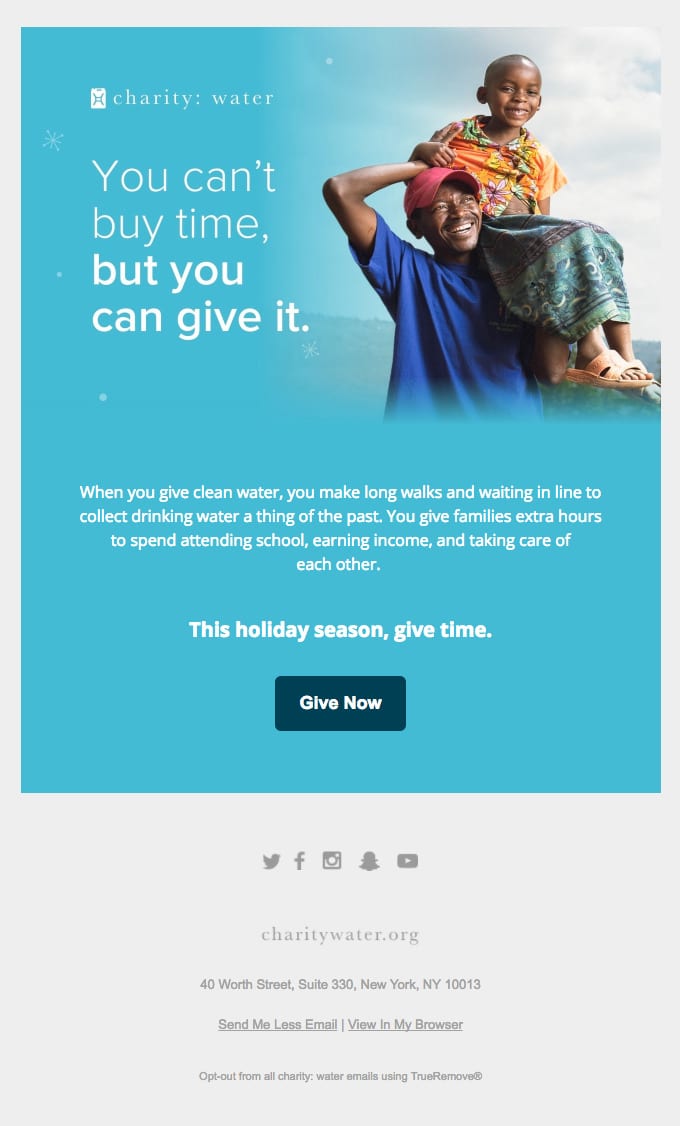Learn to craft the perfect donation message (with examples)
If ever there’s an industry that could use a tune-up in email engagement rates, it’s the non-profit sector. Unlike many other industries that offer beneficial goods and services, non-profit organizations are selling hope and altruism. Quite frankly, that's not always an easy sell.
So how can non-profits see an improvement when it comes to ensuring financial support continues to come in each year?
We’ll be answering that question by looking at some donation messages (examples included) and why they performed so well. So sit back, relax, and let’s craft the perfect donation message.
One of the most important elements of a fundraising campaign is the donation message. When crafted well, you can garner enough support to fulfill your noble cause, and more.
Source: Campaign Monitor
So, without further ado, let’s look at some donation examples that will help you craft your successful donation message.
1. Know your audience
Audience research is not just meant for businesses that are out to make a profit. It is an aspect of every organization that needs to move people into taking action. Yes, that includes non-profits.
So what is audience research?
Audience research simply means gathering data on what your target audience is interested in, their habits, and most importantly for you, causes they are passionate about. Here’s why audience research matters (and we’ll see this from our donation message examples):
-
Helps you improve your communication
-
Gives insight into what your audience wants from you
While it may seem like a daunting task to get all this data, it really isn’t. One way you can get this information is by sending out a survey email to your email list. When it comes to email marketing, data should always be at the center of crafting your message.
2. Segment your email list
Segmentation is a very powerful email marketing tactic. In short, it simply means grouping subscribers with similar attributes in the same sub email list. Depending on your goals, you can segment your email list according to (among many other things):
-
Age
-
Income
-
Location
Segmenting your email list will help you increase your efficiency and thus improve the chances of driving meaningful donations. After all, it’s easier to manage a segmented email list and craft a moving message for a particular demographic.
3. Personalization
Personalization, when it comes to email, is one important strategy you can’t afford to ignore.
Remember your audience research and segmentation?
Well, this is where it comes into play.
Using the data you have gathered, you can tailor personalized emails to your donors. A personalized email is one that connects to the reader on a personal level by referencing some of the information you have gathered about them. If your audience research yielded results associated with your cause, leverage that to build a strong emotional bond with your reader.
Sending a one size fits all donation message will not get you the much-needed donations you need to change the world. A personalized message will, though. With people living super-busy lives and their inboxes bursting at the seams, only personalized messages stand a chance of being opened, consumed, and acted on.
Source: Really Good Emails
One of the best donation message examples is that of Pura Vida. Their target audience is people who want to look good, and so they tailor a product and donation message that appeals to that particular audience. Another great effect that personalization has is that it helps build camaraderie between you and your reader.
4. Employ storytelling techniques
If there’s one thing that moves people to action, it’s a good story. No, not fairy tales, but stories that they can relate to. It is one area in which non-profit organizations have an advantage over traditional businesses. Use the experiences of your field staff and the people they help to form the basis of your donation messages. Advantages of doing this include (but are not limited to):
-
Gives donors a clear picture of your vision and mission
-
It’s a great way to prove accountability
-
It shows the impact the donations are making
All these are the perfect ingredients for crafting the perfect donation message. You want one that inspires engagement and action. One of the best donation message examples in this regard is this one from The Royal Children’s Hospital Foundation:
Source: Campaign Monitor
Some of the things that made this email successful are the hero image that immediately grabs attention (and the heart) and the story that was been well-incorporated into the message.
5. Choose your words wisely
Another tip you need to master when crafting the perfect donation message is the art of using the right words. When it comes to asking for donations, the way you ask has a huge impact on the way people will respond. This is why you need to be careful about your wording.
As for words that can help you drive donations, try incorporating these in your emails:
-
Small: “A small donation of…” has more impact than “a donation of….” This is because adding the word small makes the donation look manageable.
-
Expert: Using the word “expert,” particularly when referencing your staff, elicits trust from your donors. They’ll know that your organization is run by professionals who truly want to use their skills to help.
-
Help: Everyone has an inert desire to do good. We all secretly want to be someone’s superhero. “Help” is a powerful word that arouses that desire, leading to your readers jumping at the opportunity to satiate the hero within.
-
Immediately: You’ll also need to use words that spur people into action and immediately is one such word. Particularly if you have a gift you send to your donors, this word can work wonders. An example of this is, “Upon receiving your donation, we’ll immediately send you….”
-
You: Of all the words you should never tire of using, it’s the word “you.” Using “you” in your donation messages adds to your personalization. More than that, however, it helps your donors own the vision. “You can make a difference….,” is a great example.
Source: Campaign Monitor
By laying the foundation by highlighting the need and then including the word “you” in the ask, UNICEF nailed this donation message.
6. Nail your call-to-action
A call-to-action is a critical element of any email. The reason it’s so important is that it’s the one element that tells your readers what to do. To craft an effective call-to-action make sure it’s:
-
Direct: An ambiguous call-to-action doesn’t elicit a response. Be clear and direct about what you want your readers to do.
-
Stands out: Your call-to-action needs to stand out in your email. There should be no room for guesswork when it comes to which part of the email your reader should click on.
-
Action-based: Use language that elicits an immediate response. Words like “now,” “today” are good examples.
Source: Really Good Emails
A well-designed call-to-action, both visually and in the words used, is a great way to ensure that your donation message elicits the much-needed participation of your audience.
7. Mind your sending frequency
Something that cannot be reiterated enough when it comes to email marketing is that people are busy. For this reason, particularly with non-profits, it’s important that you send out emails regularly. Failure to do so can result in your ardent supporters forgetting to give their usual donations. However, sending too often can contribute to donor apathy.
So, what’s the solution?
While there may be no concrete answer to how many emails are enough, you can figure out what works for your organization by monitoring the response rate. If it starts waning, reduce your send frequency.
You’ll also need to be careful not to send a donation request to someone who has already donated. This is where email automation platforms like Emma come to your rescue. By automating your email campaign, you reduce the risks of making this embarrassing mistake.
Wrap up
Crafting the perfect donation email is no small task. However, by studying successful donation messages (examples and strategies), it becomes easier for you to nail your message. Just so you remember, here are the main elements of a successful donation message:
-
Know your audience
-
Segment your list and personalize your emails
-
Use story-telling to add emotional impact
-
Choose your words wisely
-
Craft a compelling call-to-action
-
Nail your send frequency
By employing these tips and strategies, you are assured of better engagement and improved participation from your donor base.
For more information on how to run a successful donation request campaign, check out our guide on how to reach your nonprofit constituents with email marketing.
MOST RECENT ARTICLES
Want to engage your audience and grow your brand? Try Emma's robust easy-to-use product today.


















